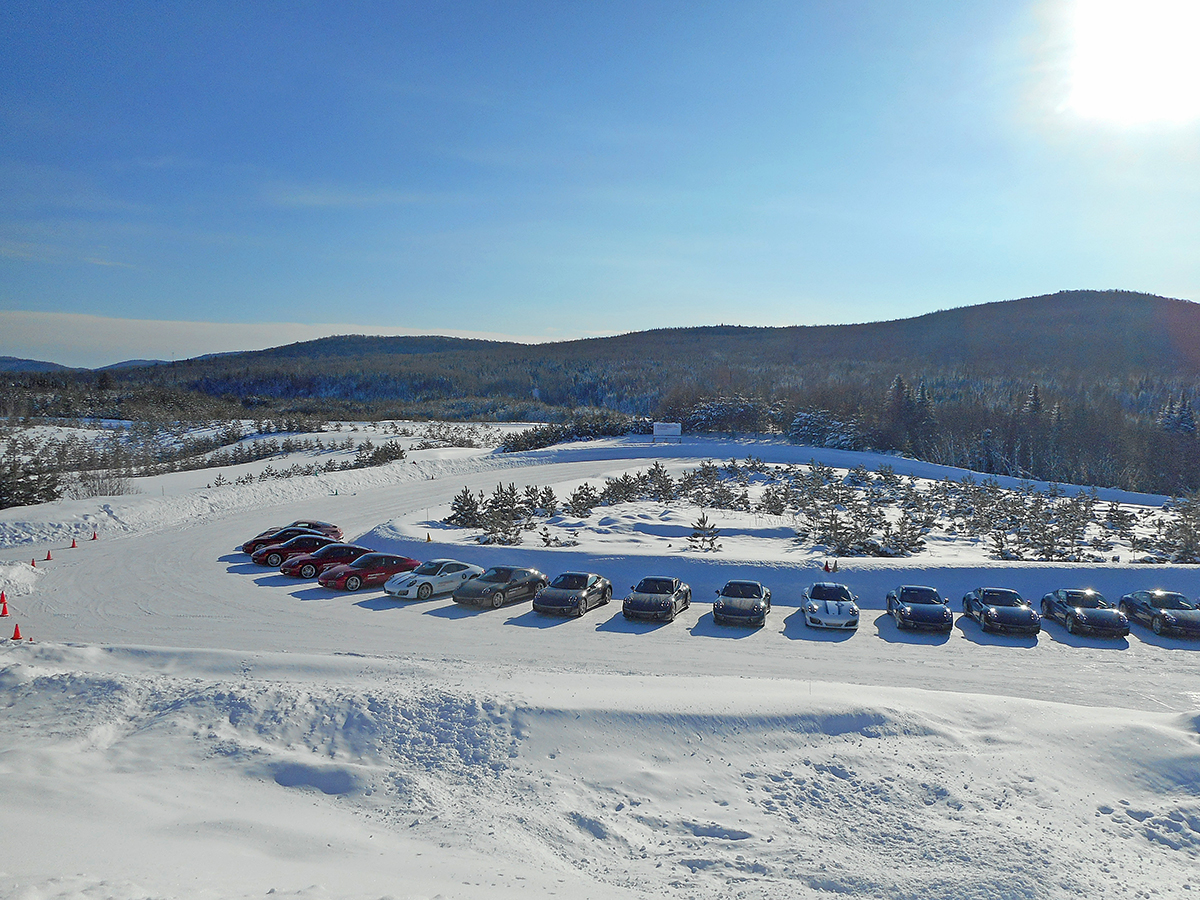Porsche Ice Experience: new name, same slippery fun


The frosty door of a Porsche 911 Carrera 4S after a lap at Quebec’s Circuit Mecaglisse. Photos by Benjamin Yong.
It may be called something different, but make no mistake — the Porsche Ice Experience (PIE) is still the most fun to be had on four wheels in the snow.
Formerly called Camp4, the winter driving course was rebranded last year to closer align with the company’s other offerings, namely the Driver Experience and Track Experience. That’s all that’s really changed.

The program is offered in various places around the globe, the two biggest being in Finland and right here in Canada, at Mécaglisse Motorsport complex located approximately two hours north of the Montreal airport. Over the course of four to five days, participants learn car control in low traction conditions (e.g. ice) piloting high performance machines.
OpenRoad was invited along to get a taste of what PIE had to offer at the end of January. Split into three separate difficulty levels, Ice Intro, Ice Experience and Ice Force, I attended a shortened one-day introduction covering the fundamentals.

“Each program essentially builds year after year on skillsets that we teach on the entry level. The tracks get a little bit larger, the cars get a little bit quicker, the exercises get a little bit more difficult and we can progress you all the way up until eventually we can release you to apply for racing license [if that is your objective],” said operations manager Jonathan Urlin.
Before getting behind the wheel, Urlin gave a concise lesson on basic driving dynamics, talking about things like the different types of physical forces (static: the weight of the car pressing down onto the ground, longitudinal: acceleration and braking, and lateral: input from the steering wheel). The goal was, at the end of the afternoon, to be able to get through a corner on snow and ice in the most efficient manner possible.

The models we would be piloting? A couple of second-generation 991 Porsche 911s running twin-turbocharged 3.0-litre six-cylinder horizontally opposed boxer engines, mated to doppelkupplung (PDK) dual-clutch automatic transmissions.
I spent the first half in the more powerful and grippy all-wheel drive 450-horsepower Carrera 4S, followed by the rear-drive 420-horse Carrera S. The idea was to feel how the different drivetrain configurations behaved. All vehicles were shod in Nokian winter tires with 1.5-millimetre studs to minimize unwanted spinning and sliding.

Drivers paired up, with Porsche certified instructors — many of whom who are still currently involved in professional racing — providing tips over handheld radio. The exercises included navigating through a slalom to experience weight transfer using the brakes and throttle; around a frozen skidpad to test understeer and oversteer; and down a short coned section to practice performing a Scandinavian flick, where the car is purposely unbalanced to initiate and sustain a drift.
The Porsche Ice Experience is offered annually between January and February.

